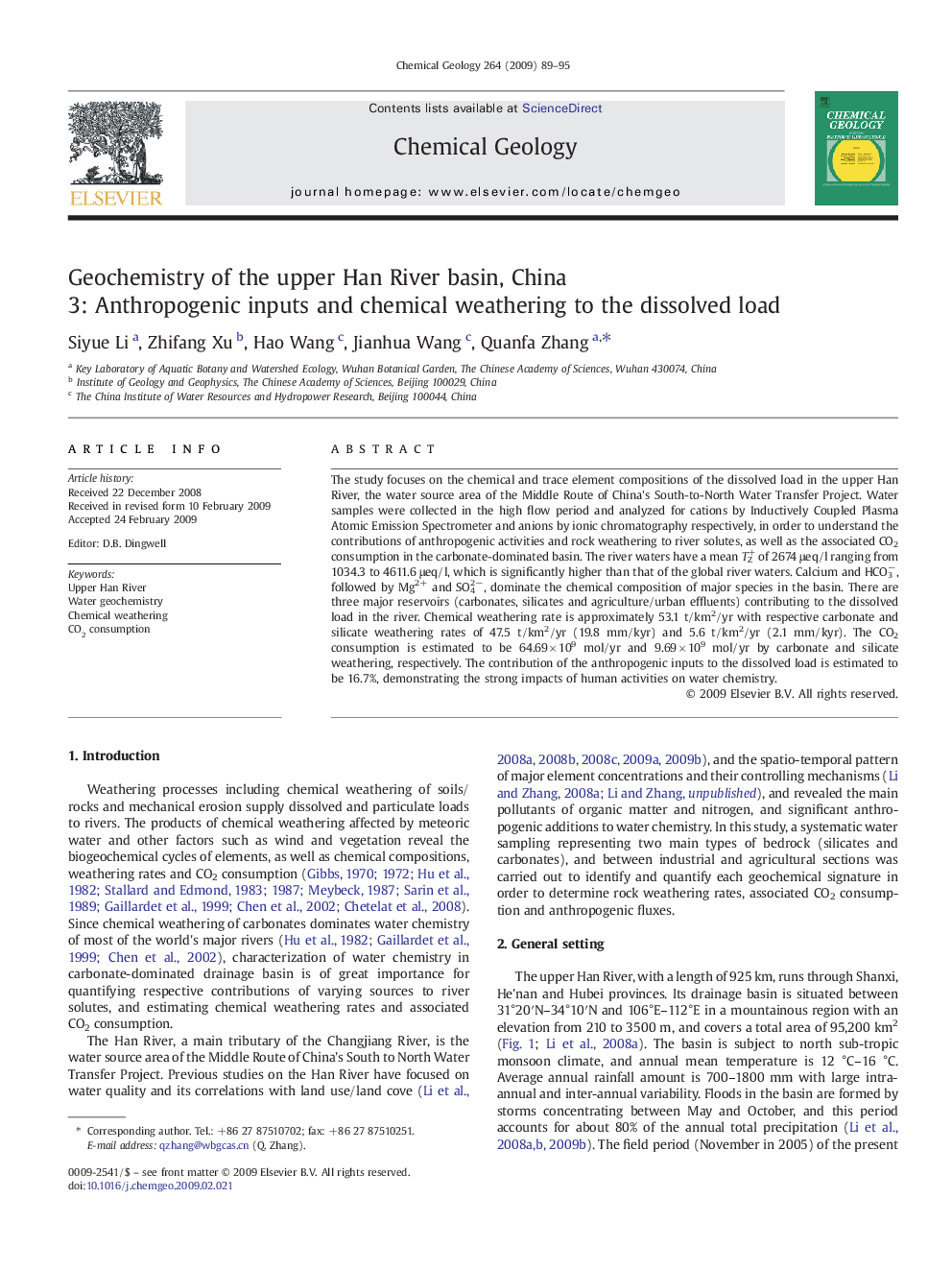| Article ID | Journal | Published Year | Pages | File Type |
|---|---|---|---|---|
| 4700300 | Chemical Geology | 2009 | 7 Pages |
The study focuses on the chemical and trace element compositions of the dissolved load in the upper Han River, the water source area of the Middle Route of China's South-to-North Water Transfer Project. Water samples were collected in the high flow period and analyzed for cations by Inductively Coupled Plasma Atomic Emission Spectrometer and anions by ionic chromatography respectively, in order to understand the contributions of anthropogenic activities and rock weathering to river solutes, as well as the associated CO2 consumption in the carbonate-dominated basin. The river waters have a mean TZ+ of 2674 μeq/l ranging from 1034.3 to 4611.6 μeq/l, which is significantly higher than that of the global river waters. Calcium and HCO3−, followed by Mg2+ and SO42−, dominate the chemical composition of major species in the basin. There are three major reservoirs (carbonates, silicates and agriculture/urban effluents) contributing to the dissolved load in the river. Chemical weathering rate is approximately 53.1 t/km2/yr with respective carbonate and silicate weathering rates of 47.5 t/km2/yr (19.8 mm/kyr) and 5.6 t/km2/yr (2.1 mm/kyr). The CO2 consumption is estimated to be 64.69 × 109 mol/yr and 9.69 × 109 mol/yr by carbonate and silicate weathering, respectively. The contribution of the anthropogenic inputs to the dissolved load is estimated to be 16.7%, demonstrating the strong impacts of human activities on water chemistry.
